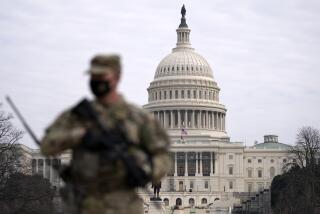Antimissile Scheme Aims at Tiny Risk, Invites Big One : This defense against rogue states might kill Russia treaty
- Share via
Two weeks ago the House leadership hastily, and with some embarrassment, canceled floor debate on a measure calling for an antimissile system that would protect all 50 states and be deployed by the year 2003. The action followed release of a Congressional Budget Office report putting the eventual cost of the Republican-sponsored plan at up to $60 billion, about 12 times as much as the legislation’s backers had estimated. The proposal, dubbed the Defend America Act, is now being downsized and is expected to be brought back soon. Smaller, however, won’t necessarily prove to be better.
Republicans are candidly pointing to their bill as something that distinguishes their approach to defense from President Clinton’s. The administration proposes to spend $2.8 billion over five years for research and development on a number of antimissile systems and $5 billion more for possible deployment. The emphasis would be on “theater missile defense,” meaning against short- and medium-range missiles like the Iraqi Scuds launched during the Persian Gulf War. The administration plan would include $500 million for national missile defense technology, that is, defense against long-range missiles.
Defense against an intercontinental attack by a small number of missiles is at the core of the GOP plan. It looks not at Russia or China as possible aggressors but at such rogue states as Libya and North Korea, which one day could pose a missile threat to the United States. When might that be? Intelligence estimates are that no threat could plausibly emerge for 10 to 15 years. Republicans say it could be sooner. That’s why they insist that a basic defense against long-range missiles be developed and in place by 2003, with a much more complex “layered defense” against a multi-missile attack to follow. A layered defense would include space-based antimissile weapons. What Republicans seem to be envisaging, then, is “Star Wars” redux, a revival of the Reagan administration antimissile plan on which about $40 billion was spent in the 1980s.
The Joint Chiefs of Staff oppose the GOP proposal. Chairman John M. Shalikashvili has warned Congress that, among other things, it violates the Anti-Ballistic Missile Treaty with Russia. Moscow no doubt would respond to a violation by refusing to ratify the START II arms reduction treaty, and that would leave in place 5,000 nuclear missile warheads Russia has promised to destroy. This is certainly a greater threat to U.S. security than the prospect of a missile attack from Libya or North Korea.
Antimissile research and development should of course continue, but on a schedule that would not mandate premature deployment of what could quickly prove to be outdated technology. And it should be conducted without violating the ABM Treaty. Defense planning and spending have to be based on reasonable assessments of risk. The intercontinental missile risk from rogue states that the GOP plan professes to see is a long, long way off.
More to Read
Get the L.A. Times Politics newsletter
Deeply reported insights into legislation, politics and policy from Sacramento, Washington and beyond. In your inbox twice per week.
You may occasionally receive promotional content from the Los Angeles Times.









